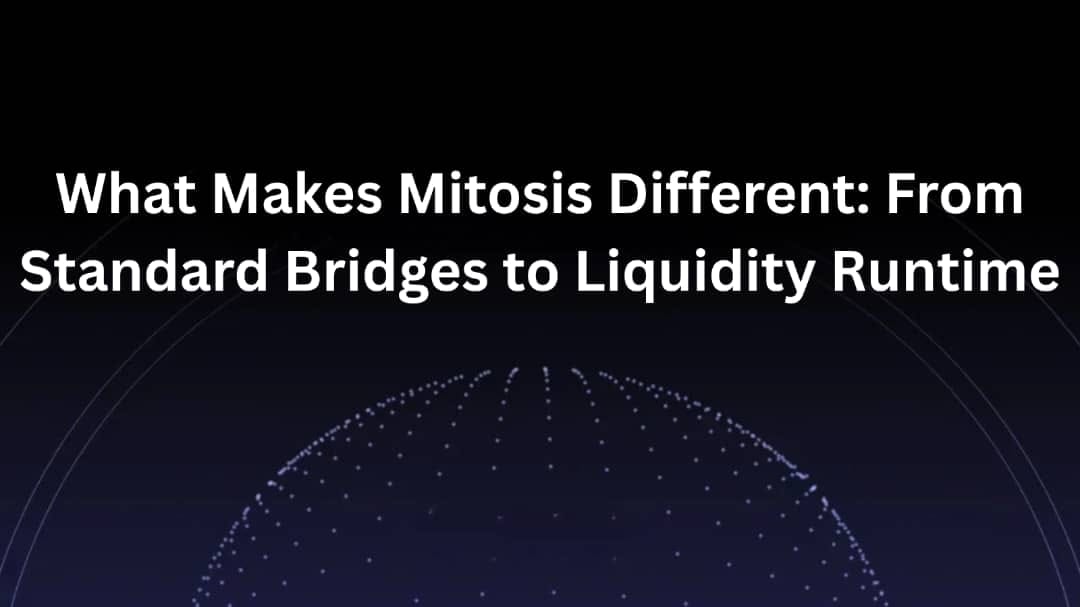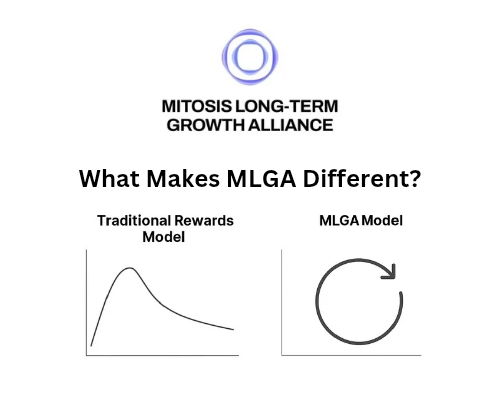What Makes Mitosis Different: From Standard Bridges to Liquidity Runtime

Introduction
In the rapidly evolving landscape of decentralized finance (DeFi), interoperability between different blockchain networks has become a critical factor for success. As the number of blockchain platforms continues to grow, the need for efficient and effective cross-chain solutions has never been more apparent. Traditional bridges, such as Wormhole, Axelar, and LayerZero, have made significant strides in facilitating asset transfers between chains. However, Mitosis sets itself apart by focusing on a more comprehensive approach that emphasizes routing state information, not just assets. This article provides a comparative analysis of Mitosis against these standard bridges, highlighting how its unique features and functionalities create a more robust and user-centric liquidity runtime.
1. Understanding Standard Bridges
1.1 What are Standard Bridges?
Standard bridges are protocols that enable the transfer of assets between different blockchain networks. They typically work by locking assets on one chain and minting equivalent tokens on another, allowing users to move their assets across chains. While this functionality is essential for interoperability, it often falls short in addressing the complexities of decentralized applications that require more than just asset transfers.
1.2 Limitations of Standard Bridges
- Asset-Centric Focus: Most standard bridges primarily focus on transferring assets, which can limit their functionality in supporting complex interactions between decentralized applications.
- Lack of State Management: These bridges often do not manage the state of applications across chains, making it challenging to synchronize data and interactions effectively.
- User Experience: The user experience can be cumbersome, as users must navigate multiple steps to complete transactions, often leading to confusion and inefficiencies.
2. Mitosis: A New Paradigm in Cross-Chain Interoperability
1. State Routing vs. Asset Routing
i. Focus on State
Mitosis differentiates itself by prioritizing state routing over simple asset routing. This means that Mitosis can manage not only the transfer of assets but also the underlying state of applications across different blockchain environments. By routing state information, Mitosis enables more complex interactions and better synchronization between chains.
ii. Enhanced Functionality
The ability to manage state allows Mitosis to facilitate sophisticated applications, such as cross-chain smart contracts and real-time data sharing. This functionality is crucial for developers looking to build applications that require seamless interactions across multiple chains.
2. Comprehensive Liquidity Solutions
i. Dynamic Liquidity Management
Mitosis offers tools for managing liquidity across various platforms, ensuring that users can access the best rates and conditions for their transactions. This dynamic liquidity management is essential for optimizing user experience and maximizing returns on investments.
ii. User-Centric Design
The platform is designed with the end-user in mind, making liquidity provision and access more intuitive and efficient. By simplifying the process of managing liquidity, Mitosis encourages greater participation in the DeFi ecosystem.
3. Comparison with Other Bridges
i. Wormhole
Wormhole is a popular cross-chain bridge that primarily focuses on asset transfers. While it has successfully facilitated the movement of assets between chains, it lacks the depth of state management that Mitosis offers. This limitation can restrict the complexity of applications that can be built on top of Wormhole.
ii. Axelar
Axelar provides cross-chain communication but does not emphasize the same level of liquidity management that Mitosis offers. While Axelar enables asset transfers, it does not provide the comprehensive tools for dynamic liquidity management that Mitosis users benefit from.
iii. LayerZero
LayerZero offers a unique approach to interoperability by allowing applications to communicate across chains. However, it lacks the comprehensive liquidity solutions that Mitosis provides. This absence can hinder user experience and engagement, as users may not have access to the same level of liquidity optimization.
4. Future-Proofing Interoperability
i. Scalability
Mitosis is built with scalability in mind, allowing it to adapt to the evolving needs of the DeFi ecosystem. As more blockchain networks emerge and user demands change, Mitosis can accommodate these developments without compromising performance.
ii. Interoperable Framework
The architecture of Mitosis supports seamless integration with various DeFi protocols, enhancing its utility and adoption across different platforms. This interoperability ensures that Mitosis remains relevant in a rapidly changing landscape.
Conclusion
Mitosis stands out in the crowded landscape of cross-chain solutions by focusing on state routing and comprehensive liquidity management. This approach not only enhances user experience but also paves the way for more advanced applications in the decentralized finance space. By prioritizing the management of state information, Mitosis enables developers to create more sophisticated applications that can operate seamlessly across multiple blockchain networks.
As the demand for efficient and user-friendly solutions grows, Mitosis is well-positioned to lead the charge in redefining cross-chain interactions. By offering a robust liquidity runtime that goes beyond standard asset transfers, Mitosis is set to play a pivotal role in the future of decentralized finance, fostering greater interoperability and innovation in the ecosystem.
Call to Action
For developers and users interested in exploring the capabilities of Mitosis, consider engaging with the platform and participating in its growing community. By leveraging the unique features of Mitosis, users can unlock new opportunities in the DeFi space and contribute to the evolution of cross-chain interoperability.

Comments ()